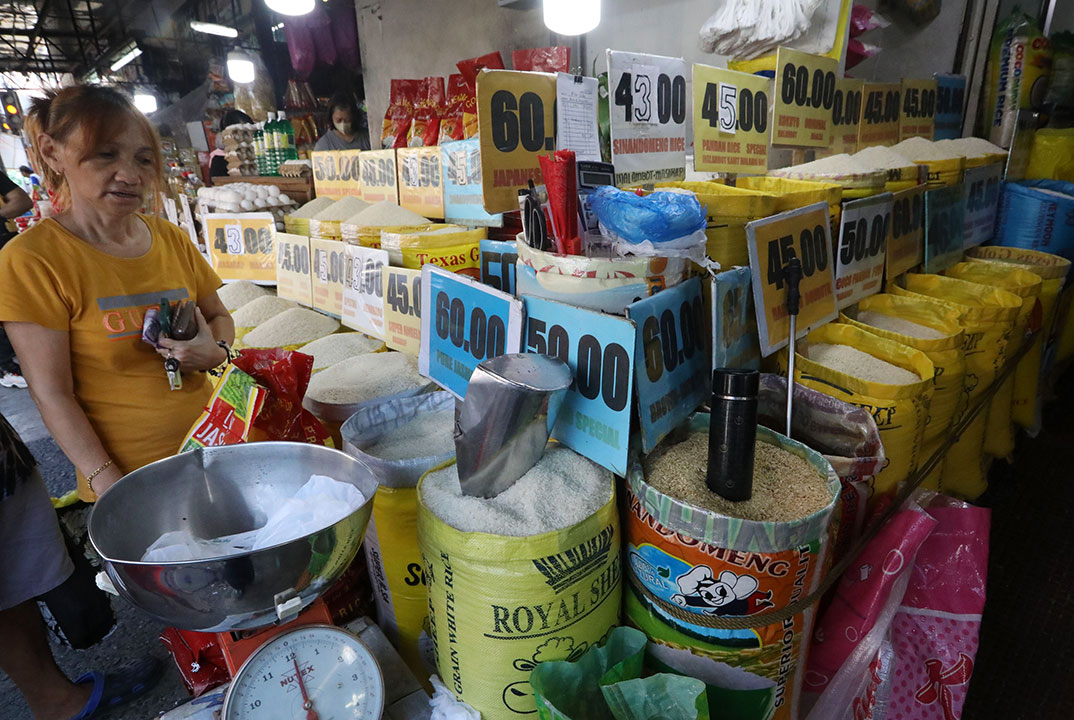
By Luisa Maria Jacinta C. Jocson, Senior Reporter
MILAN, Italy — The government is open to adopting a seasonal tariff scheme for rice imports to better protect farmers.
“Yes, we will need to study it. I would say if there are no operational or even legal impediments to it, I would favor it. Because that way, we can stabilize farmers’ incomes and prices that farmers receive,” Department of Economy, Planning, and Development Secretary Arsenio M. Balisacan told BusinessWorld on the sidelines of the Asian Development Bank Annual Meeting here last week.
This comes after the Federation of Free Farmers (FFF) proposed implementing levies that are strategically timed to not clash with the height of the harvest season. Seasonal tariffs would also mean variable rather than fixed duties.
Since July last year, the government slashed tariffs on rice imports to 15% from 35% until 2028 to tame spiraling prices.
Mr. Balisacan said the government would need to study how to implement seasonal tariffs, adding that these used to be a primary instrument of the European Union and the United States prior to the World Trade Organization (WTO).
“Now, we have to find out how you navigate that, because who is following WTO at this time? Everybody’s just changing tariffs everywhere, so we have to find a way to study this.”
A seasonal tariff will shield farmers from the impact of volatile prices, he added.
“What you’re actually doing is establishing a price that you would want the farmers to face. Then when the world prices drop, you raise the tariff so as to keep the price. When the world prices rise sharply, you reduce the tariff. In other words, you’re stabilizing the price faced by farmers. So that’s good,” Mr. Balisacan said.
For the past few months, rice inflation has been on a downtrend after the government implemented several measures to tame the retail prices of the staple.
Apart from lower tariffs, it also declared a food security emergency on rice in February, which allows the release of buffer stocks. The Agriculture department also imposed a maximum suggested retail price on rice earlier this year.
In April, rice inflation further contracted to 10.9% from the 7.7% decline in March.
Data from the Philippine Statistics Authority showed the average price of a kilo of regular milled rice nationwide fell by 13.3% year on year to P44.45 in April. Average prices of well-milled rice dropped by 10.4% to P50.54 while special rice decreased by 6.2% to P60.69.
Despite this, farmers’ groups have said rice prices still remain elevated in most local markets.
The Committee on Tariff and Related Matters (CTRM) is already reviewing the proposal to implement seasonal levies, Mr. Balisacan said.
“From there, they will recommend it to the CTRM Cabinet, and then it will be elevated to the Economy and Development Council, which is formerly the National Economic and Development Authority Board.”
Farmers’ groups like the FFF and Samahang Industriya ng Agrikultura have also recommended bringing the rice tariff back to 35%.
Meanwhile, the Department of Agriculture (DA) said it is also open to considering seasonal tariffs pending further study.
“Conceptually, we are receptive to the idea and we’re willing to consider many ideas,” Agriculture Undersecretary Asis G. Perez told BusinessWorld on the sidelines of the same event. “But we have to find ways to implement it and also make sure, because when you do it at the seasonal level, sometimes it might cause uncertainty and unpredictability.”
“As for the concept itself, we are receptive to considering the idea as proposed. As always, the DA is like that. We don’t shut down an idea.”
Mr. Perez said their policies must aim to “take out the unpredictability” in food supply, which affects prices.
“That’s to ensure consistency, predictability, which is, I think, a critical element for a robust food supply system. Not only for rice but for everything, any other product,” he added.
The DA in January said it was expecting the palay or unmilled rice harvest to exceed 20 million metric tons (MT) this year. In 2024, palay output declined to a four-year low of 19.09 million MT, down by 4.84% from the previous year.
Rice imports will likely decline 1.9% to 5.2 million MT this year, according to the US Department of Agriculture. In 2024, rice imports hit a record 4.7 million MT.